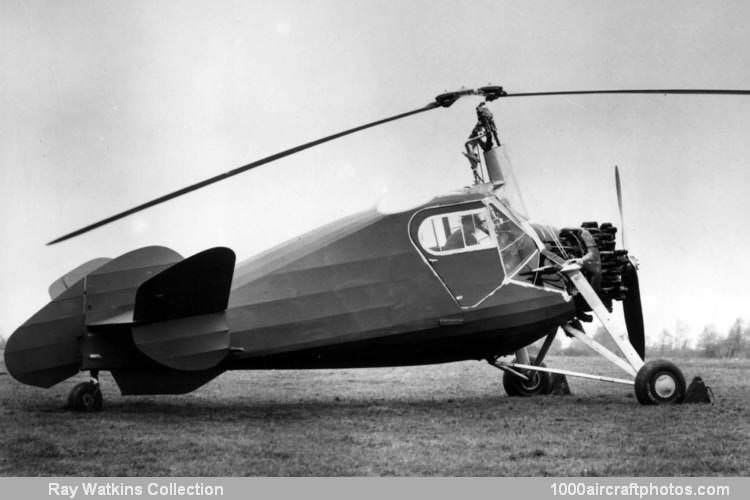04/30/2009. Remarks by Ray Watkins: "In 1933 Westland became interested in rotary wing aircraft some ten years after Juan de la Cierva had approached the company for financial help in return for collaboration in future autogyro projects. The approach had been rejected by Sir Ernest Petter, but for some years Robert Bruce (Managing Director and designer) and Harald Penrose (Chief Test Pilot) had been interested in rotary wing flight, with Bruce having earlier assisted Louis Brennan with his helicopter at RAE Farnborough. Ironically, Westland's first rotary wing aircraft, the C.29, was the last aircraft design that Robert Bruce was involved with.
Design began in 1933 and was of typical Westland warren girder construction using steel and duralumin tubing with a fabric covering. Power was supplied by a 600 hp Armstrong Siddeley Panther II radial engine with direct drive to a two-blade propeller and a clutched shaft to power up the three-blade main rotor. The cabin of the C.29 could accommodate five people. Cierva was responsible only for the rotor and the rotor control system which had a 'hanging stick' control column passing through the roof of the cockpit.
When Cierva came to conduct initial tethered testing in early 1934 serious ground resonance problems were encountered, which caused the fuselage to rock from side to side and required the control column to be restrained to prevent damage in the cockpit. No answer to the problem could be offered by Cierva or Bruce, causing Cierva to state that the aircraft was too dangerous to operate. The Air Ministry nevertheless requested that the aircraft be sent to RAE Farnborough for testing, but they were no more successful in solving the problem and the aircraft was broken up in June 1939."
